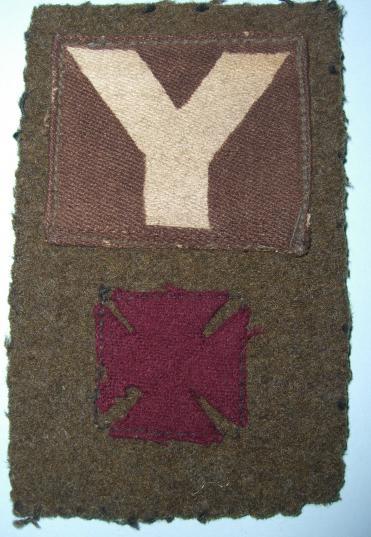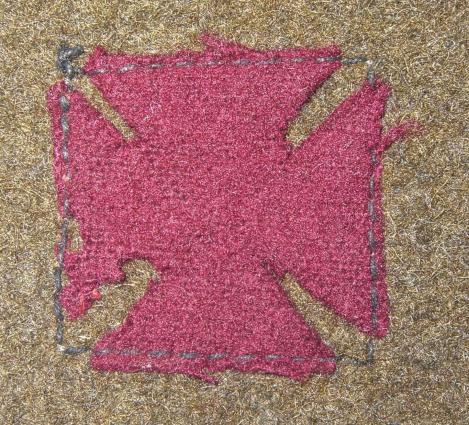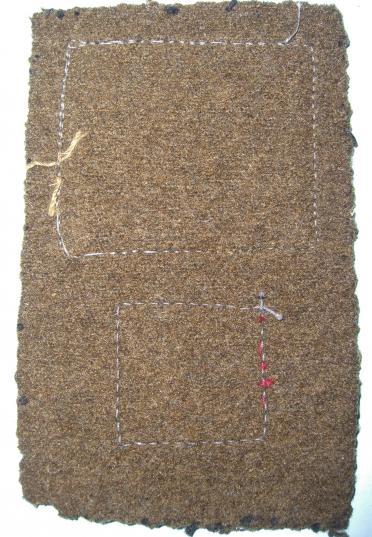WW2 - 2nd Battalion the Wiltshire Regiment / 5th ( Yorkshire ) Division Battledress Combination
1st Pattern printed 5th Division formation sign above a maroon / purple Maltese cross for the 2nd Battalion Wiltshire Regiment sewn on to a cut out panel of battledress sleeve. Some mothing to Wiltshire cross on left hand-side otherwise in good condition.
The 2nd Battalion, Wiltshire Regiment, began the war as part of the 13th Infantry Brigade, which also included 2nd Cameronians (Scottish Rifles) and 2nd Royal Inniskilling Fusiliers (later 5th Essex Regiment), part of the 5th Infantry Division of the British Expeditionary Force in France. The battalion fought in a series of engagements during the Battle of France in May 1940, most notably at the Battle of Arras. After being evacuated at Dunkirk, the 2nd Wiltshires participated in Operation Ironclad, the capture of Vichy-held Madagascar, known as the Battle of Madagascar. On 19 May the Battalion re-embarked on the Franconia to sail to India to rejoin the 5th Division and were stationed in Bombay and Ahmednagar until August. The Wiltshires, as well as the rest of the brigade were then sent to the Middle East. As part of 13th Infantry Brigade, the Wiltshires spent the end of 1942 until early part of 1943 operating in Iraq, Persia, Syria and Palestine, under Middle East Command. Later, the brigade participated in Operation Husky, the invasion of Sicily, and the follow-on invasion of the Italian mainland in September 1943. During the Italian Campaign, the 2nd Wiltshires would win battle honours for its actions, taking part in the Moro River Campaign and later crossing the Garigliano river in January 1944. From March until late May, the battalion fought in the Battle of Anzio, enduring terrible conditions and fighting in trench warfare, similar to that on Western Front nearly 30 years before. They later fought in the breakout from the Anzio beachhead, Operation Diadem and the subsequent capture of Rome. On 3 June 1944 Sergeant Maurice Albert Windham Rogers was posthumously awarded the Victoria Cross, the first and only to be awarded to the regiment during the Second World War. Eventually the battalion, as well as the rest of the brigade and the 5th Division would be withdrawn from the Italian Campaign and sent to Palestine, where they would remain for the rest of the year, training and absorbing replacements, mainly from anti-aircraft gunners retrained as infantrymen. In early 1945 to relieve the British 1st Infantry Division. However, the 5th Division was instead joined the British Second Army, at the time fighting on the Western Front, to participate in the final drive into Germany in April 1945. They took part in the Elbe River crossing as well as the encirclement of Army Group B. When hostilities ended on 8 May 1945, they were at Lübeck on the Baltic Sea. The Battalion moved to Einbeck on 1 July and settled down to occupation duties. As the official history reads, "So ended a journey of over 25,000 miles through nearly six years of war.
D44.20(1)
Code: 61562



